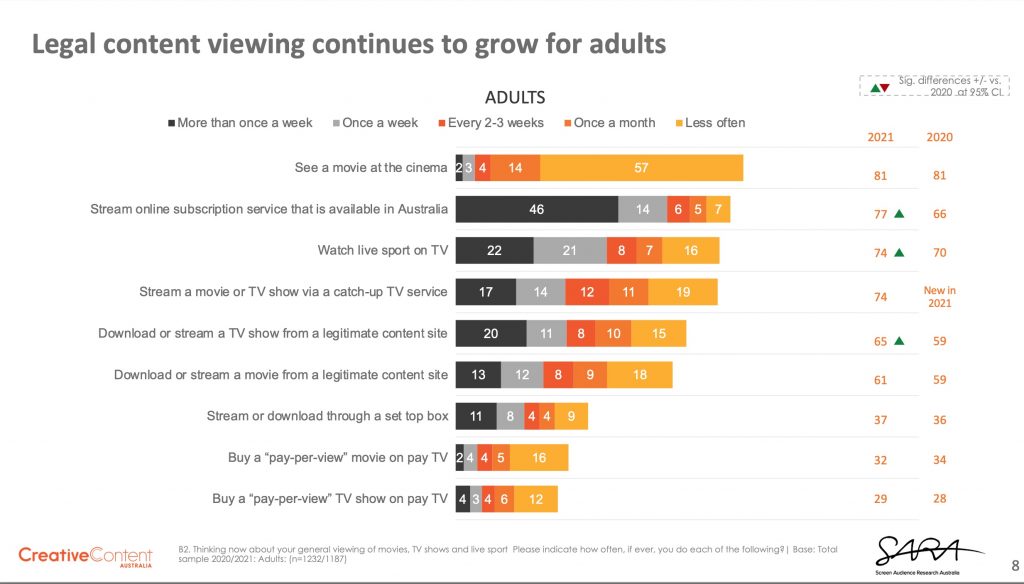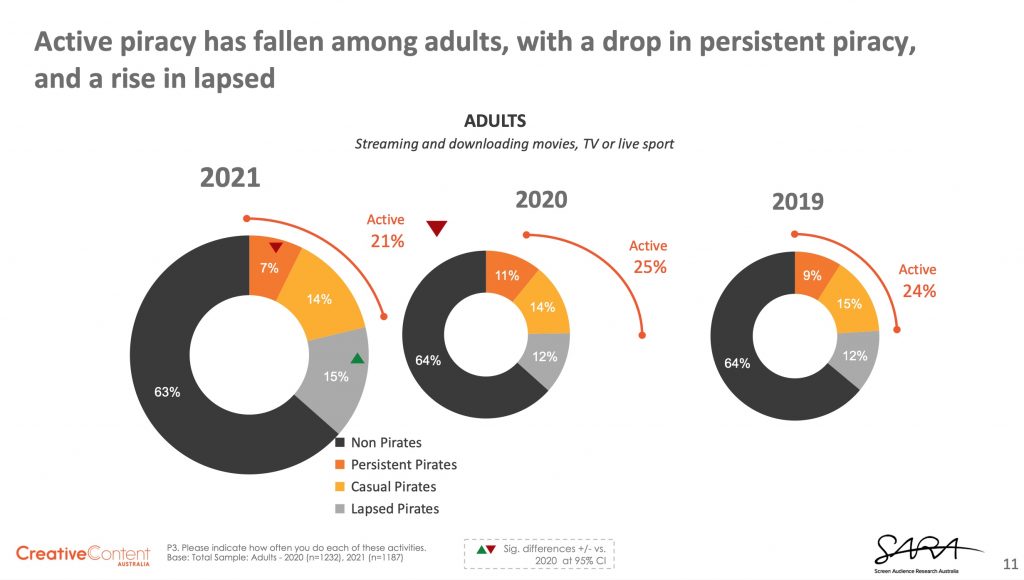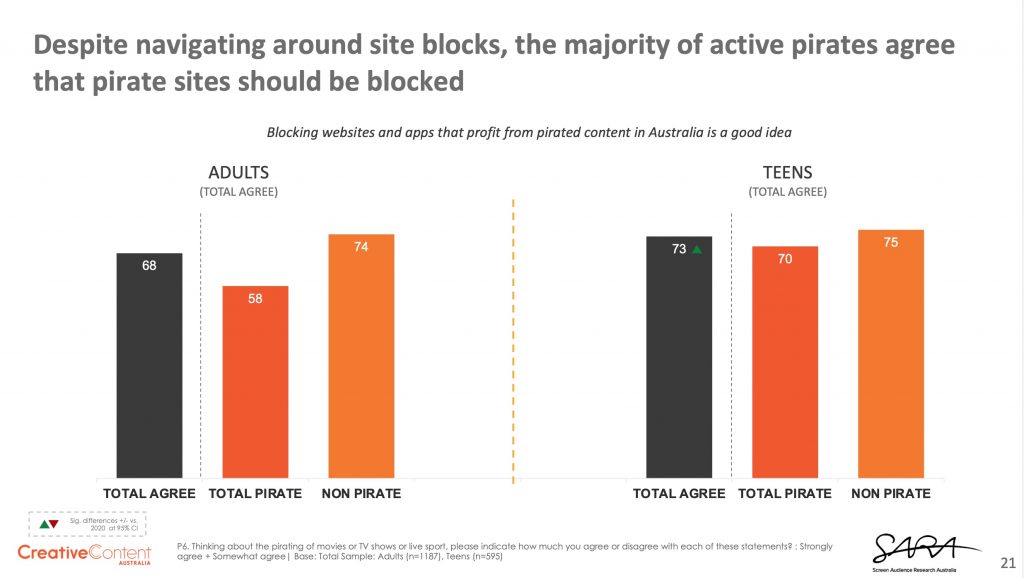 Creative Content Australia published its annual consumer behavior survey, which showed changes in piracy behavior not to be dramatic but instead, to be a matter of degrees.
Creative Content Australia published its annual consumer behavior survey, which showed changes in piracy behavior not to be dramatic but instead, to be a matter of degrees.
More than half of both teen and adult respodants are pirating less often because they are increasingly satisfied with legal alternatives. 43% of respondants acknowledged having had exposure to anti-piracy advertising, including 37% of teens.
Methodology
The survey was taken during September and October 2021, from 1187 adults aged 18 and over, and 595 teens aged 12 through 17 from across Australia – against the backdrop of COVID-19 restrictions that kept people out of theatres and in lockdown throughout the year. Australia was particularly strict in its public policy regimen.
Participants were segmented into four categories: Persistent pirates that participated in piracy at least once a week, Casual pirates who were active one or more times per month or less, Lapsed pirates who no longer engage in it, and non-pirates who have never done it.
Viewing habits
Adults in the three piracy categories watched at minumum nearly 4x the amount of content from March 2020 through August 2021 than they did pre-COVID. For teens, it was nearly 6x or more across the three piracy categories.
2021 viewing of content through legal channels grew in comparison with 2020, both for live sports programming and for online streaming services – both for adults and for teens. Downloading from legal sources also grew. For teens, viewing through set-top boxes and viewing of live sports on TV both decreased between 2020 and 2021.

The percentage of adults taking one or two subscription VOD services from 2019 through 2020 and into 2021 decreased somewhat, while the percentage of those taking three or more remained steady.
Piracy rates
Piracy by adults went from 25% to 21% overall between 2020 and 2021, with persistent piracy dripping from 11% to 7%, casual piracy staying at 14%, and lapsed pirates rising from 12% to 15%. Non-pirates stayed steady in the 63%-64% range.

Generally there were small declines across most pirate consumption use-cases: across streaming, mobile access, using a VPN or changing Internet settings to avoid detection or bypass location protections. However, pirates who have been active over many years were found not to change their behavior during the study period.
Piracy discovery
Search engines and recommendations via social media were the preferred mechanisms used to discover pirate sources. 10% of adults and 21% of teens pay to use illegal “IPTV” services via subscription models. 47% of active pirates encounter blocked sites, and when they do, nearly 60% of them seek alternative illegal sites while only 14% of them turn to legal sites that offer the same content. A third of persistent pirates change their network DNS settings to bypass blocked sites.
Piracy paradoxes
44% of teens and 29% of adults claim to pirate less because of worries over viruses, exposure of personal information, or have been hit with viruses or malware after visiting a pirate site. One in five piracy consumers reported having been hit by malware. And yet, more than 80% of adults and three quarters of teens do not question where the pirate content came from.

Pirate consumers are more likely to have purchased illegal login credentials, yet are also concerned over the safety of their own credentials.
Further details and percentages are available in the report itself
Read CCA Press Release and Download the Report
Visit the Creative Content Australia Web site
Why it matters
Despite the rates of piracy found in this research, more than two thirds of adults agree that pirate blocking is a good idea, including 58% of persistent users. Even higher percentages of teens agree at 73% and 70% respectively.
Majorities of users across all the piracy categories, teens and adults alike, don’t see themselves as “pirates,” although these rates declined noticeably in 2021 among persistent pirates, and among casual adult pirates. The idea that piracy is a social norm has also dropped.
Most significantly, more than half of both teen and adult respodants are pirating less often because they are increasingly satisfied with alternatives that are available legally – and also, because they feel badly about pirating, are afraid of cyber-attacks, or simply find piracy to be too time-consuming.












